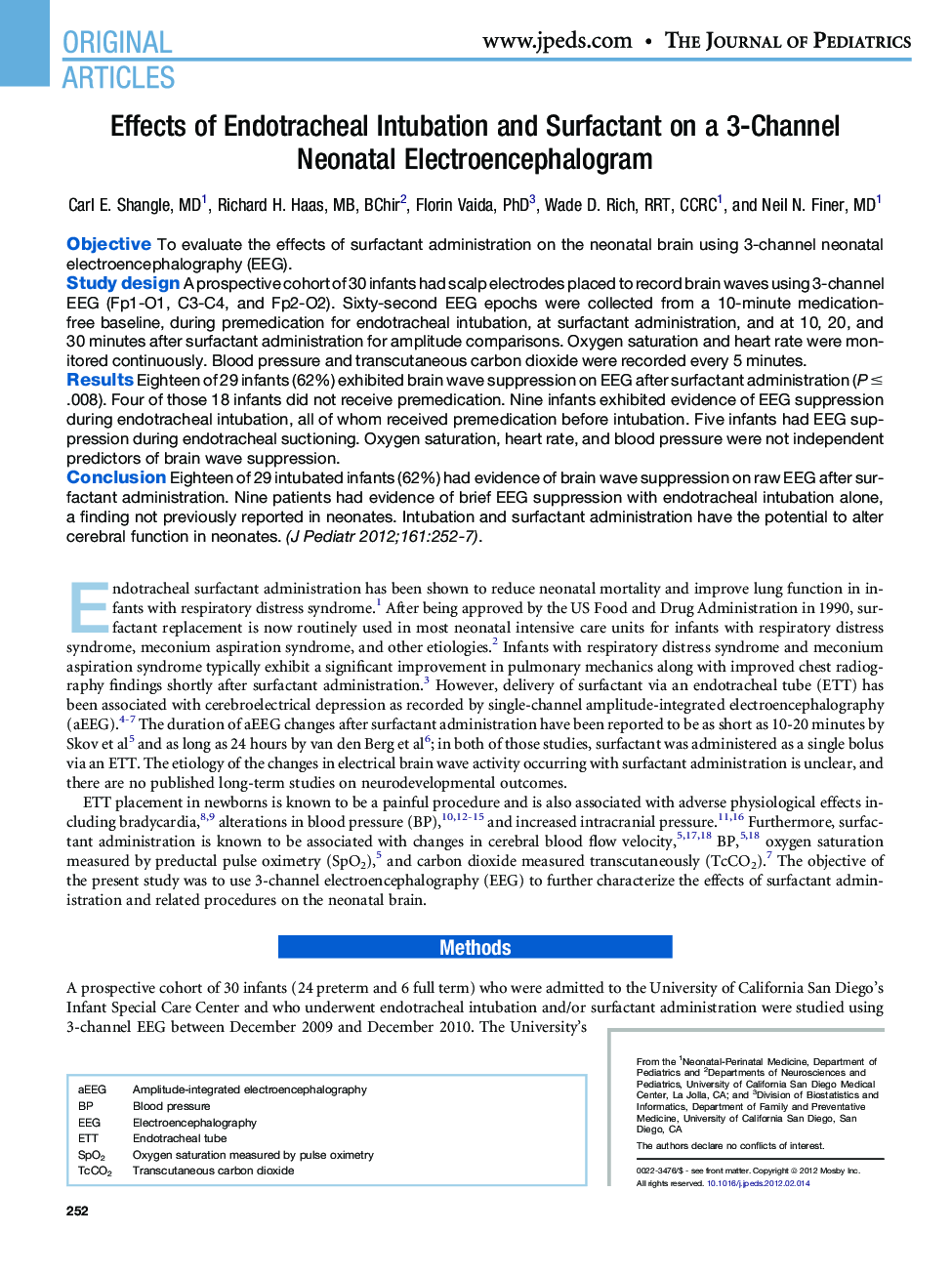| Article ID | Journal | Published Year | Pages | File Type |
|---|---|---|---|---|
| 6223080 | The Journal of Pediatrics | 2012 | 6 Pages |
ObjectiveTo evaluate the effects of surfactant administration on the neonatal brain using 3-channel neonatal electroencephalography (EEG).Study designA prospective cohort of 30 infants had scalp electrodes placed to record brain waves using 3-channel EEG (Fp1-O1, C3-C4, and Fp2-O2). Sixty-second EEG epochs were collected from a 10-minute medication-free baseline, during premedication for endotracheal intubation, at surfactant administration, and at 10, 20, and 30 minutes after surfactant administration for amplitude comparisons. Oxygen saturation and heart rate were monitored continuously. Blood pressure and transcutaneous carbon dioxide were recorded every 5 minutes.ResultsEighteen of 29 infants (62%) exhibited brain wave suppression on EEG after surfactant administration (P ⤠.008). Four of those 18 infants did not receive premedication. Nine infants exhibited evidence of EEG suppression during endotracheal intubation, all of whom received premedication before intubation. Five infants had EEG suppression during endotracheal suctioning. Oxygen saturation, heart rate, and blood pressure were not independent predictors of brain wave suppression.ConclusionEighteen of 29 intubated infants (62%) had evidence of brain wave suppression on raw EEG after surfactant administration. Nine patients had evidence of brief EEG suppression with endotracheal intubation alone, a finding not previously reported in neonates. Intubation and surfactant administration have the potential to alter cerebral function in neonates.
